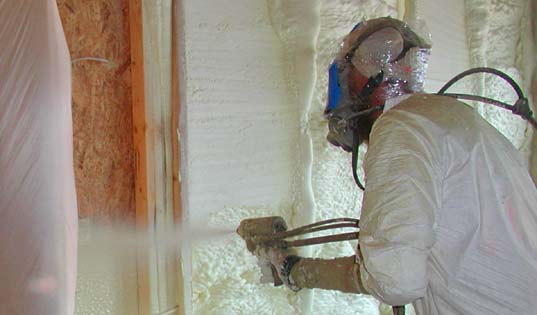Insulation is a term used to explain certain materials that prevent the passage of heat, electricity etc. between two areas that are relatively different in temperature.
Insulating your home will provide a barrier around it that will reduce the amount of heat that enters it. On a hot day, for instance, a concrete roof that is exposed to the extreme heat outside, without insulation, will begin to absorb it, thus making it hotter and hotter in little time. This heat, thus absorbed is then emitted into the building itself, making the temperature inside often quickly warm up to that outside. Because of the heat capacity of such roofs, the house will remain thus uncomfortably hot during the entire duration of the summer and even warm at night. Because heat always flows from a hotter area to a colder one, the opposite happens during the winter when the heat from inside the house is absorbed by the roof and released outside. This results in the home often being as cold as it is outside. All homes hence require insulation. Insulation acts as a shield around your house that traps the inside temperatures. It reduces the amount of heat gain during a warm day and the amount of heat loss during a cold one. It thus keeps the house cooler during summers and during winters, traps the heat within the insulation barrier, keeping the home warm. Insulation is hence significant to maintain a comfortable, temperature controlled living environment and reduces energy costs. It further protects against condensation and noise pollution and contributes to maximum home efficiency. A well-insulated home is very energy efficient and requires very less extra heating or cooling.

Insulation is again, especially significant to guard against the electric flow. Electricity is one of the most relied upon advances in the modern day but is also the most dangerous, if misused. This is why any item carrying electricity is designed to do so, with proper insulation. Such insulation prevents the flow of electric current between the different conductors, or the conductor and the ground. Conductors are usually metallic of which the most common ones are copper and aluminium, both excellent conductors of heat. Insulators must have the opposite properties of conductors and are hence, non-metallic, made from plastic, rubber etc.
It is also important to note that insulating materials are often materials that have been recycled like cellulose which is made from recycled newsprint, fibreglass made from recycled glass and mineral wool which is produced from post-industrial recycled content. So using insulation made from these materials is both beneficial for you and the earth.



